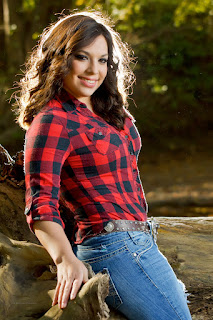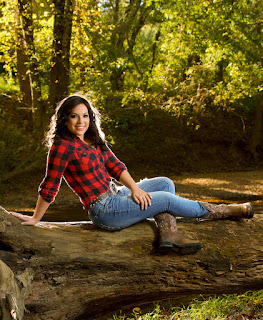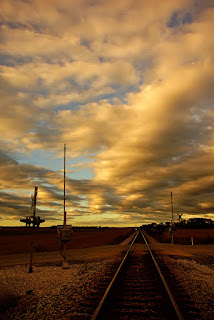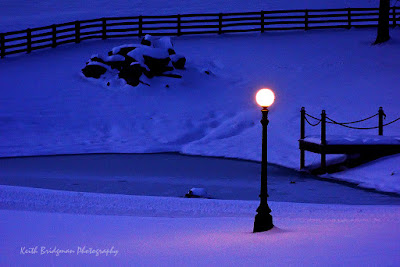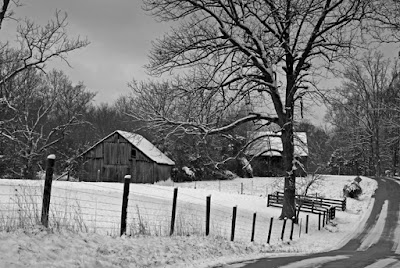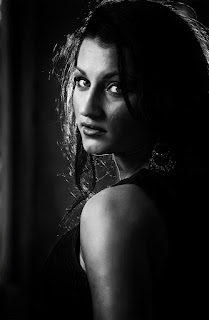
I will at times fall into in a slump. This past winter was a rather cold and dreary winter and for whatever reasons I failed to get out very much. That along with work related pressures took a toll and what I enjoy doing most suffered the most as a result. Even though those elements do carry a lot of blame, to be truthful, I have no one to blame except myself. I just did not take the time to get out when I had it, and my inspiration suffered.
Photography is not unlike writing in that we as photographers often stumble along with
Photographers Block trying to reignite those creative elements that drew us to photography in the first place. As I reflect on the slump. . . again . . . and as I examine the quality of what I've recently created, I am not very pleased with what I discover. Usually, in time, I will happen upon the work of another and find inspiration from it. With any luck at all, it will trigger a string of ideas that leads to an exciting revelation.
One such event took place recently from an Arkansas photographer, Tim Ernst, whose work I have often used as inspiration. It is no coincidence that his style of photography and mine have some similarities. In recent months he has been exploring low light / night photography of waterfalls and other places of interest around his home range. His work is amazing. As a result I realized that I have been neglecting a wonderful opportunity to capture similar images, and so this spring I have started a new project called -
Capturing Ghost Light. It just might prove the cure to my slump ailment.
Light possesses so many qualities it becomes difficult to attach meaning and purpose to the variety of ways it impacts a photograph. Low light, or what I call
Ghost Light, imparts a magical softness to the scene. It works in almost all situations, but is especially effective with moving water, and works wonders with waterfalls.
So what exactly is Ghost Light? It is mostly the use of ambient light that softly glows in the sky after sundown. That glow will remain for quite sometime after, but it does fade quickly. Even after it fades, Ghost Light still provides a unique atmosphere. Another form of Ghost Light is the moon. Moon light is basically reflected daylight...just softer and less intense. A very bright moon will cast shadows, and it imparts a soft even light across the scene. But, the Ghost Light I prefer is when there is a redish, or pinkish, glow in the sky. That particular glow generates some amazing light reflections off water or wet surfaces and is usually present right up until it gets too dark to see.
Another form of Ghost Light comes from the night sky itself. It is full of stars, and during the summer, the band of the Milky Way arches across a clear dark sky like a silver ribbon and provides a wonderful subject when combined with proper technique. One of the best captures of Ghost Light is to combine moving water / waterfalls with the night sky. That is an area I will explore more as the season progresses.
Capturing Ghost Light is actually pretty easy. You will need a sturdy tripod as the exposures are long, upwards to 30 seconds or longer. A cable release is recommended, but not required. A wide angle lens tends to work best, anything from 10mm upwards to 35mm will do a good job...it just depends on the composition you want to create.

Camera setup is pretty much the same as any daylight situation, although you may want to experiment with a few things like White Balance, and Color saturation. For moving water, I will use a f/stop somewhere between f/16 and f/22 to be able to capture foreground to background sharpness...f/22 seems to work best. I will place the camera very low to the ground and make sure there is something in the foreground even if you have to reposition an old tree limb or large rock to do so. Even scattering a few leaves around will help. I usually shoot with Aperture Priority and focus about 1/3 to 1/2 of the way into the scene (with f/22). Auto focus may fail you during those low light times because there is not enough light contrast for it to work, so switch to manual focus. As mentioned previously, the White Balance is usually set to daylight or (5500k), but you can adjust up or down depending on the effect you want to achieve...you are the artist...you decide that...not the camera!
Ghost Light begins just after sundown. The soft ambient light eminating from the sky will fill shadowed areas with a faint even light. As the light grows dimmer, the only thing that changes is the length of your exposures. Even light where it is almost too dark to see will provide enough light to capture an amazing image.
I am growing more excited about this new project. Capturing Ghost Light is just another way to explore this amazing science called photography. It is also a great way to explore your own creative instincts.
Keith
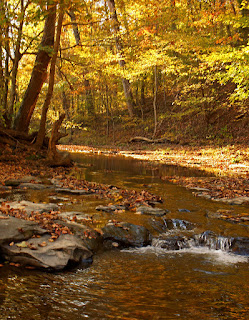 During this time, it is easy to lose time when a gentle fall breeze sings to you as it searches through the tree tops. Maybe that is why fall is one of the favorite seasons, certainly it is mine. As much as I enjoy hearing the wind carried across the fields and thru the trees, nothing else soothes the soul quite like the serenade of a lively creek on refreshing fall afternoon where the dappled sun lays across the shadows and all the sounds and vibrations of the season bid an Indian Summer welcome. It is a time special made for photographers.
During this time, it is easy to lose time when a gentle fall breeze sings to you as it searches through the tree tops. Maybe that is why fall is one of the favorite seasons, certainly it is mine. As much as I enjoy hearing the wind carried across the fields and thru the trees, nothing else soothes the soul quite like the serenade of a lively creek on refreshing fall afternoon where the dappled sun lays across the shadows and all the sounds and vibrations of the season bid an Indian Summer welcome. It is a time special made for photographers.


